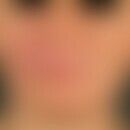Synonym(s)
HistoryThis section has been translated automatically.
The genus was first described in 1889 by Henri Ernest Baillon. The name "Malassezia" refers to Louis-Charles Malassez.
DefinitionThis section has been translated automatically.
A lipophilic yeast fungus which is difficult to cultivate and only develops in a medium enriched with oil, glycerol or glycerol monostearate. The genus Malassezia includes species whose natural habitat is the skin of humans and other warm-blooded animals. Malassezia species have been associated with a variety of dermatological and even systemic diseases. Pityriasis versicolor is the only skin disease besides Malassezia folliculitis for which Malassezia is clearly considered to be etiologically causative. Malassezia may play a pathogenic role in other dermatoses as e.g. seborrheic dermatitis, atopic dermatitis and psoriasis. There is no indication that the organisms invade the skin.
You might also be interested in
PathogenThis section has been translated automatically.
Mlassezia occurs mainly as commensals on skin rich in sebaceous glands. Due to the different morphology of this yeast, Pityrosporum ovale, Pityrosporum orbiculare and Malassezia were until recently considered as three different organisms.
Pityrosporum refers to the mycelium-forming form of Malassezia furfur, formerly described as the causative agent of pityriasis versicolor. In the meantime, larger studies have shown that >90% of Malassezia globosa is the causative pathogen of pityriasis versicolor. As with the Candida species, a transition from the yeast phase to the mycelium-forming phase can be observed in Malassezia species.
- Disease patterns caused by Malassezia species:
- clinical pictures in which a contributory causative role of Malassezia species is suspected:
- seborrheic eczema
- pityriasis capitis
- Atopic eczema
- Head neck shoulder dermatitis (clinical variant of atopic dermatitis in which Malassezia species are suspected to play a role.
Note(s)This section has been translated automatically.
The genome of Malassezia globosa has now been decoded. This organism is extremely efficient, producing more than 50 enzymes, including 14 lipases. A fatty acid synthetase is missing, which makes the yeast dependent on a lipid source. The lipophilic yeasts break down the triglycerides in the sebum into glycerol and free fatty acids. The saturated fatty acids are metabolized by Malassezia, while the unsaturated ones penetrate into the deeper layers of the skin and cause irritation there. The result is increased cell proliferation with macroscopically visible scales.
Malassezia furfur produces azelaic acid (AZA), an acid that hinders the pigmentation process of melanocytes. AZA significantly reduces UV-B light-induced nuclear translocation of the p65 subunit of the NF-kB protein (see below NF-kappaB protein; NF-kappaB1 protein) and phosphorylation of p38 mitogen- and stress-activated protein kinase A. AZA also induces the activity of the peroxisome proliferator-activated receptor γ (PPARγ - see PPAR gene below), which plays a crucial role in the control of inflammation.
LiteratureThis section has been translated automatically.
- Cafarchia C et al (2015) Azole susceptibility of Malassezia pachydermatis and Malassezia furfur and tentative epidemiological cut-off values. Med Mycol 53:743-748.
- Lin SY et al (2019) The epidemiology of non-Candida yeast isolated from blood: The Asia Surveillance Study. Mycoses 62:112-120.
-
Prohic A det al.(2016) Malassezia species in healthy skin and in dermatological conditions.
Int J Dermatol 55:494-504.
Incoming links (9)
AhR receptor; Azelaic acid; Keratosis areolae mammae acquisita; Komedo; Malasseziafolliculitis; Malassezia furfur; Oval pityrosporon; Pityrosporon orbiculare; Skin flora, normal;Outgoing links (8)
Atopic dermatitis (overview); Azelaic acid; Malasseziafolliculitis; Malassezia-sepsis; NF-KappaB1; Pityriasis simplex capillitii; Pityriasis versicolor (overview); Seborrheic dermatitis of adults;Disclaimer
Please ask your physician for a reliable diagnosis. This website is only meant as a reference.





